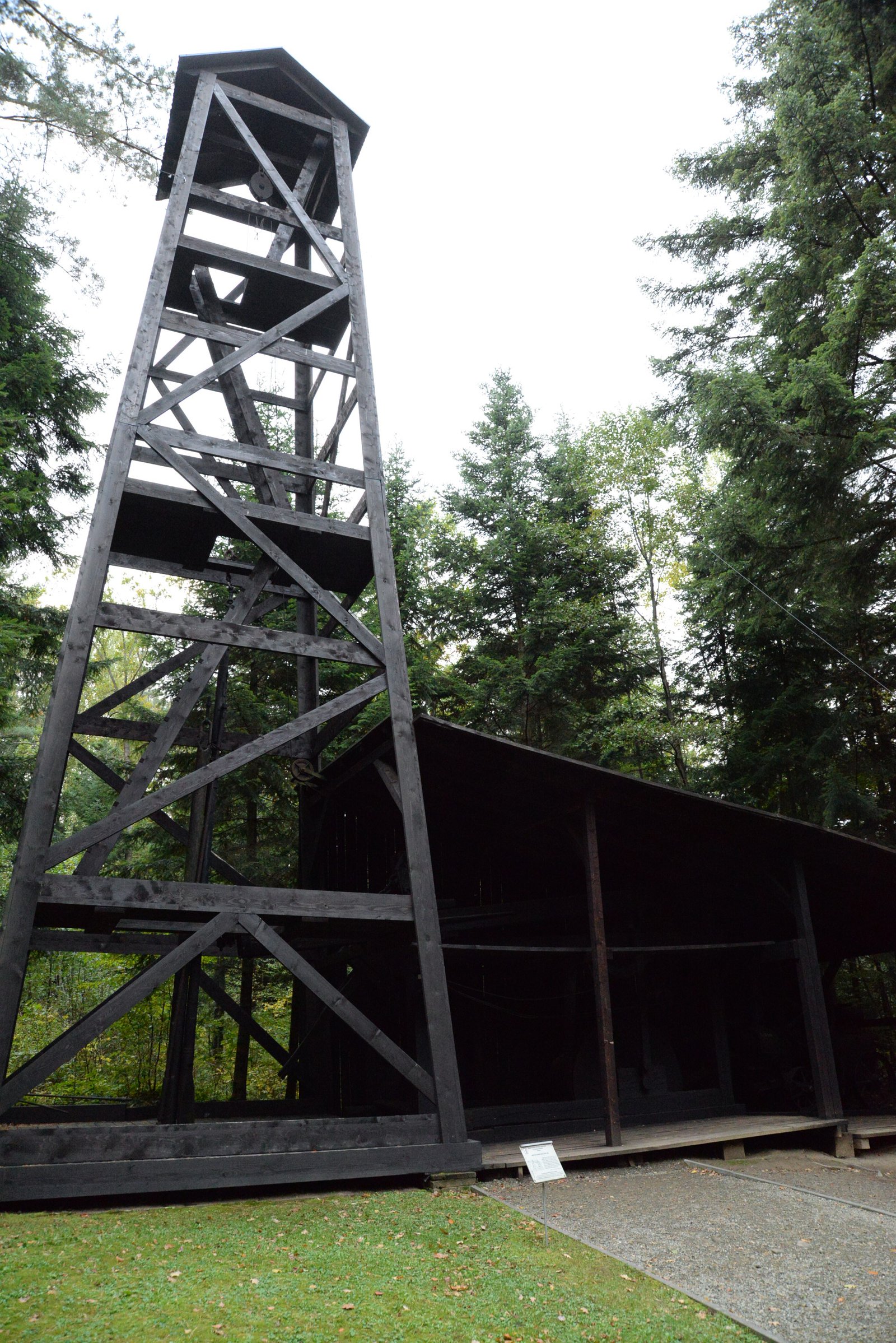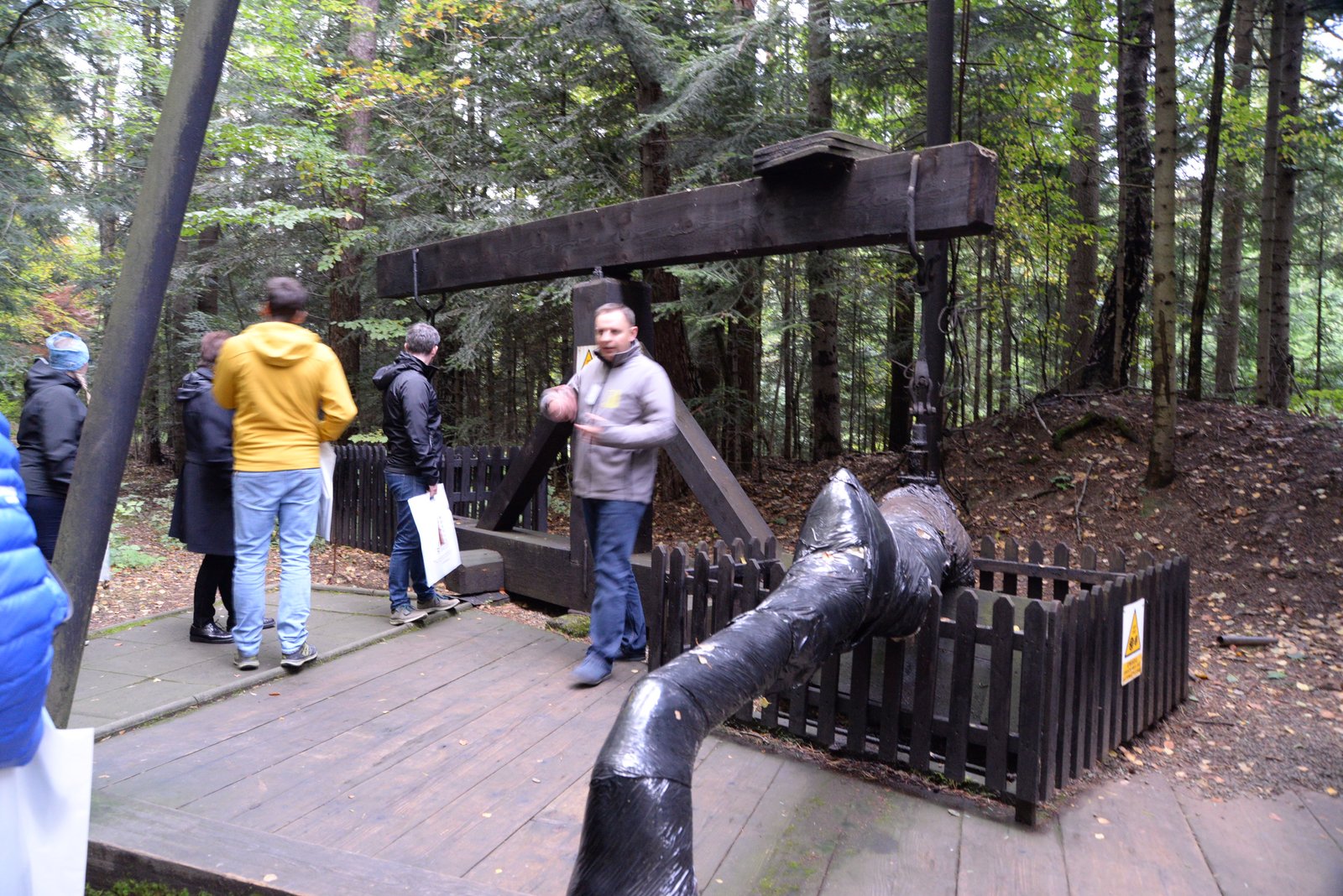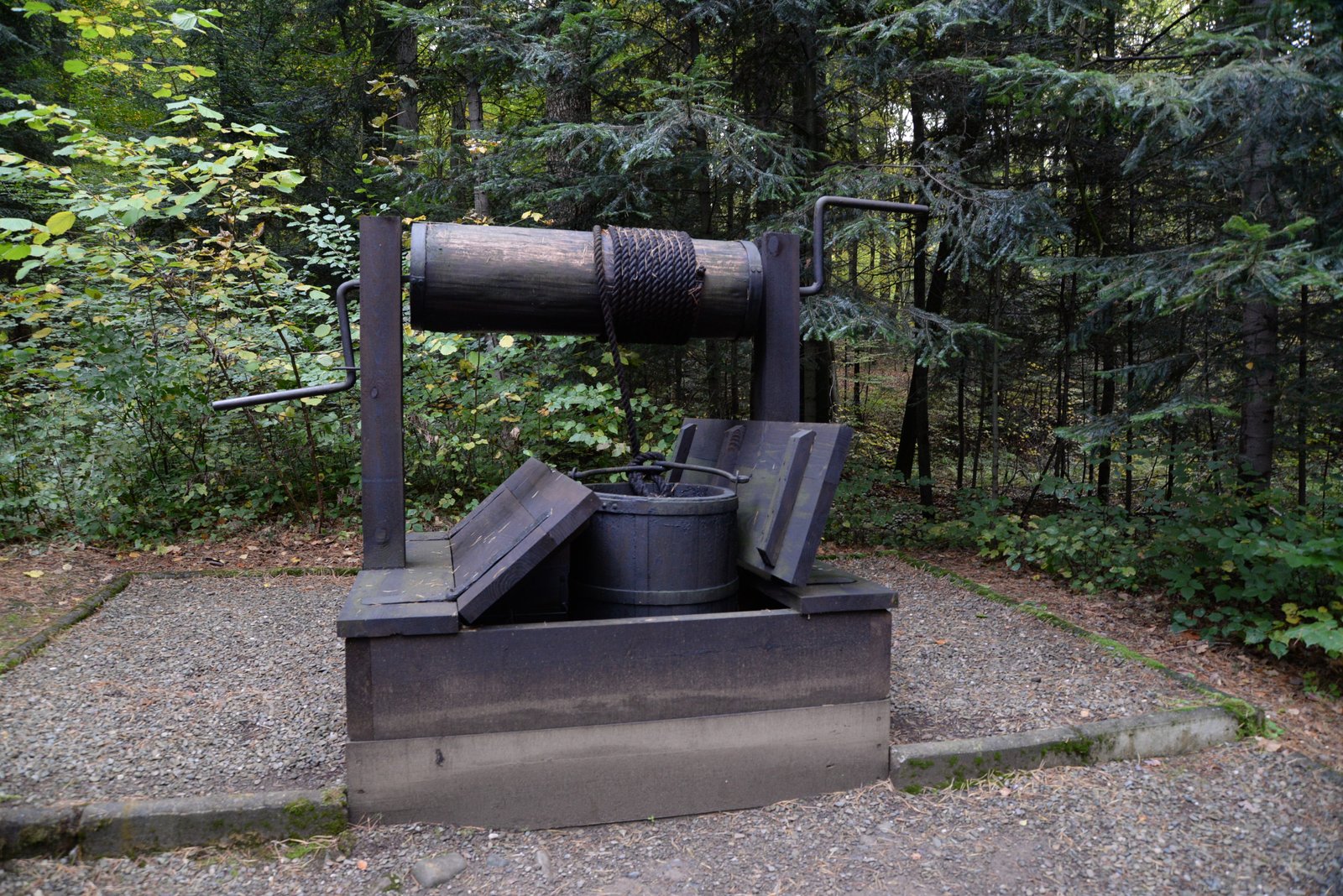The first oil well in the world was drilled by Colonel Edwin Drake in Pennsylvania, Cowboyland, in 1859. Everyone in the oil industry, and probably every American child, know the story of how Colonel Drake knocked the well 21 meters down, hit pay and changed the world.
But, no, it wasn’t.
The first oil wells in the world were dug a few years earlier in the Old World, in southern Poland.
The hill landscape of southern Poland lies at the toe of the Carpathian Mountains. With rolling hills, forests and farm land, it reminds of Tuscany, moved north. But in the 1850s, this land was not a part of Poland, because there was no Poland. Through the late half of the 18th century, the grand Polish-Lithuanian kingdom, which had covered large parts of the Baltics, Poland, Belarus and Ukraine, was cut and shared like a cake by the mighty powers around it. The hilly toe of the Carpathians ended up as the Kingdom of Galicia, a part of the Austrian Empire, but with some domestic independence.
Most people in Galicia were poor farmers and workers, with some wealthy land owners and the church on top. People here had long known that some places, oil seeps came out of the ground. The black liquid turned out very useful: It was used for waterproofing wooden roofs and clothing, and also for medicine.
The place of the oldest oil well in the world may be a matter of definition of “well”, but a good candidate is at Puste Pole. Today it is a quiet forest where the locals pick mushrooms, but look closely at the ground, and some peculiar features emerge: Round holes, a meter or two in diameter. Today they are often filled with rubbish, but clearing the litter reveals shafts up to twenty meters deep – and sometimes with oil at the bottom.

The world’s first oil well? One of many hand-dug holes in the ground in Puste Pole – once an oil well, now cluttered by twigs and waste.
The shafts are scattered out onto the land. Many poor men tried their luck: they spent savings to rent a few square meters of land, and started digging for the black gold. Oil digging was like a lottery, where the winning ticket could propel a worker into a better life. If lucky, they could get rich – if, most of the time, not lucky, there was nothing to do but going back to work, and hope to save enough to rent another little stamp of land to dig on.
Ignacy Lukasiewicz was one of those who used oil for medicine. A modest country pharmacist in Lviv, now in Ukraine, he started experimenting with distilling the oil. A pharmacy in the 1850s was not the high-tech lab of today, rather it was a quite primitive work room with a stove, a work bench, some instruments – and a distillation apparatus. In 1852, Lukasiewicz was the first in the world to distil kerosene out from oil, separating it from the light gasoline and the heavier asphalt. Together with business partners, he also developed the first kerosene lamps. Reliable, with less soot and better light than candles, kerosene lamps would be a god-send for northern Europeans in the dark winter. Lukasiewicz, which in his young life had been a political activist and sent to prison for supporting independence from the empire, was on his way to become a wealthy man.

A pharmacist’s lab in the 1860’s: Quite primitive, with a stove and a distilling apparatus. This replica of Ignacy Lukaziewicz lab is in the Bobrka oil museum.
There was only problem: Getting enough oil. The seeps and some shallow ditches did not produce enough oil. Kerosene was so expensive, that only the wealthiest could afford it. It was then Lukasiewicz showed his real shrewd sense of business: If he could find more oil, prices would be lower, but many more people would be able to afford it, and he would make much more money. It was time to dig for oil – literally.
Lukasiewicz teamed up with Tytus Trzecieski, a very wealthy landowner, and Karol Klobassa-Zrencki, the owner of the land in Bobrce, where oil seeped out of the ground. With capital from Trzecieski, they started digging the first true petroleum exploration wells. Or, more precisely, they hired workmen with picks and shovels to dig shafts into the rocks. These first oil wells were really small mines.
In the beginning, these shafts reached only some meters down into the ground, and the yield was low. But the year after, one shaft struck so much black gold that Lukasiewicz could set up the first industrial distillery plant in nearby Ulaszowice.
The first commercial oil field was born, and the oil hoisted up in buckets, like from water wells.
These first oil mines were roughly squares with 1,2 m sides, up to 20 meters deep, and with the walls supported by timber – the very first oil well casing. Nevertheless, oil digging was dangerous work, with unstable side walls, and the risky combination of oil and open flame lamps for light. It was time to go from shovel to drill bit.
The first oil drilling rigs were rather primitive contraceptions. A wooden frame supported a long cantilever with a heavy metal rod at one end, and workers to pull the other end. Up and down, up and down, the hard end of the rod would slowly bang itself down into the ground. Then, a hollow tube was lowered into the hole to pick up the crushed rocks. At its lower end, it had a lid, which closed when the tube retreated up, and kept the crushed rocks inside on their way to the surface.

1860’s drilling rig: The boom to the left was used to lift and drop the percussion drill bit; the tower and the wheel was used to sink and lift the tools to clean the hole of crushed rocks.
These first percussion rigs could «drill» up to one meter per day, at best, at the cost of sore fingers and broken backs.
Enter the steam engine. In the 1860’s, the industrial revolution literally steaming ahead, the Bobrka oil company replaced men with steam engines to lift the boom with the percussion rod. Steam engines could lift heavier rods higher, and they did not get exhausted as long as they were fed coal. Drilling efficiency doubled, to two meters per day. (For comparison, modern diesel-powered rotary rigs can drill ten meters – per hour).
These steam percussion rigs could make holes up to two hundred meters deep – later they were able to drill to a full thousand meters. Not much by today’s standard, where four kilometers holes are routine, but an enormous increase over the previous shallow shafts. They could reach oil at depths, which previously were unthinkable. Through the last half of the 19th century, drilling rigs spread out through the world. Azerbaijan became the producing centre in Europe, and the characteristic silhouette of the drilling towers spread out in the American Wild West. Global oil production skyrocketed.

Steam powered oil rig at the Bobrka oil museum: Much larger than the hand driven rigs – and much more powerful. This rig type were called “Canadian Rigs”, as the construction was imported from over there.
Deeper wells also brought with them the most famous danger of oil: Blowouts. Hand-dug wells were basically enhanced seeps, but the steam percussion wells could reach reservoirs under pressure. Today, oil wells have blow-out-preventers, which can shut the hole and work…most of the time…, and seismic and geological data tell the depth where the drillbit will hit the reservoir. No such things existed back then. The black gushers of blowouts were signs of both successes – here’s oil! – and of trouble. A gusher of oil onto a hot steam engine is not a good combination.
Back in Poland, the Bobrka field itself does not have enough pressure to create blowouts, but in a nearby field, one blowout created a fire which ravaged for two full months. Nevertheless oil jobs were attractive: In this poor land, a rig worker, if lucky and hitting oil could make enough money in one month to pay for a house.
Ignacy Lukasiewicz himself worked in setting set up more oil fields and refineries in southern Poland. He became a very wealthy man, and a philanthropist – and married his own niece, Honorata. He also returned to politics and was elected to the regional Galician assembly, the Sejm. In 1863, he openly supported an uprising in the eastern parts of Poland, the piece of the cake taken by the Russians – but with little result: Russia crushed the uprising and sent insurgents to Siberia. For the rest of his life, Lukasiewicz stuck to develop the oil industry further.
Today, the Bobrka oil field is a museum. Oil geeks can admire a large collection of rigs, from dunk-dunks to modern rotary rigs. There is smell of oil in the air, and looking down into an old, primitive well, one can see the black gold, bubbling with natural gas. For an Oil Man like me, going there was like going to a pilgrimage.
Bobrka also has the world’s oldest oil wells still in production: Drilled in 1864 and 1870, they still produce one barrel each per day. Mostly for show – the wells produce only a couple of hours each day, before water breaks through and they must be shut in, for the oil to refill – but nevertheless: These wells are monuments of some wise men and the birth of oil industry as we know it.

Oldie but goodie: This is one of the world’s oldest oil wells in production; still pumping a barrel or two per day.
(And, by the way: Drake was not a Colonel. He just said so to get credibility. He was a railroad worker).



We don’t need to look to Poland for an earlier well than Pennsylvania’s, but to the only province that borders the state. Oil was discovered at what became Oil Springs, Ontario, in 1856, and America’s first commercial well was in production by 1858, a year before the one in Titusville, PA.
The “Canadian Rigs” noted in the above story are a clue to the pioneering industry in southern Ontario.
Hi Wayne! Thanks for your comment. It seems that every oil country wants to claim that it really happened there first :) I have heard similar claims about both Ukraine and Romania. But obviously you are right that the technology of the “Canadian rigs” come from Canada.
The first country in the world with a petroleum production officially registered in the international statistics: „The Science of Petroleum” certifies in 1938 the fact that Romania was the first country in the world with an oil production of 275 tones officially registered in the international statistics. It was followed by the United States in 1859, Italy in 1860, Canada in 1862 and Russia in 1863. So the first oil wells were in Romania – handug oil wells.
Thanks for your comment! The first oil wells in Poland were hand-dug as well, as you can see in the blog post.I guess that the in reality, oil wells were dug in both Poland, Romania, as well as in Canada (see the comment above) around the same time, so it is difficult to know which one was the very first.
The first ones were in Poland, as you wrote. The first reported in statistics were in Romania. ;)
Trinidad and Tobago had an oil well drilled in 1857 next to its pitch lake.
Baku 1847?
https://bakutravelguide.com/worlds-first-oil-well/
In Croatia, in village called Peklenica first oil wells were established in 1856. It was 4 m deep.
I read a thesis paper once that estimated the ancient Roman Empire and later the Byzantine oil industry to be about 50000 bbl annually at its height. Oil seeps out of the ground all over the place and it’s very useful stuff. Romans used paraffin lamps and so did the Greeks and they certainly didn’t get it from whales. It certainly doesn’t take a genius to dig oil wells. I think that the distinction in Titusville was that brine wells were common in several states including Pennsylvania long before then and were often spoiled by oil droplets mixing with the salt. The good Colonel simply adapted the methods used to dig a typical salt well but used an engine to raise the drill bit instead of a spring pole.
Jim has a point. Oil has been coming out of ground for many many years. Roman Empire used it. Persian poetry from 1000 years ago refers to the use of tar (oil that creeped to the surface with volatiles removed) several thousand years before. However polish workers have a long history of contributing to the oil industry. Their skills were in demand outside Poland.
Why does it say cowboyland Pennsylvania?
Hvordan går det med boka?